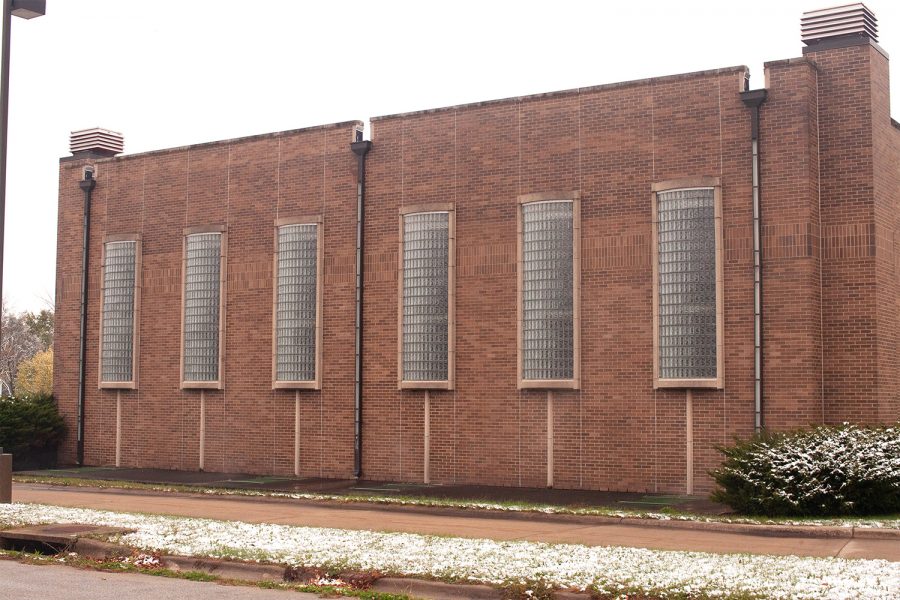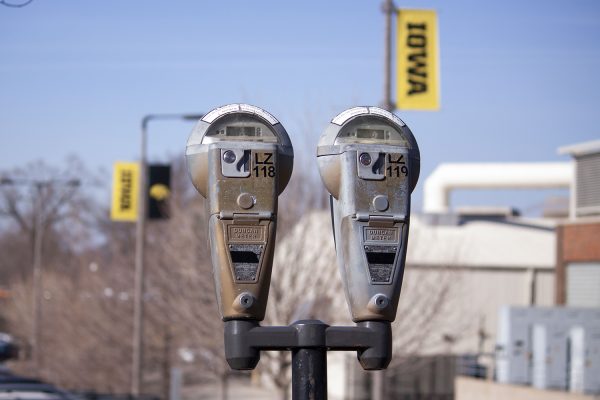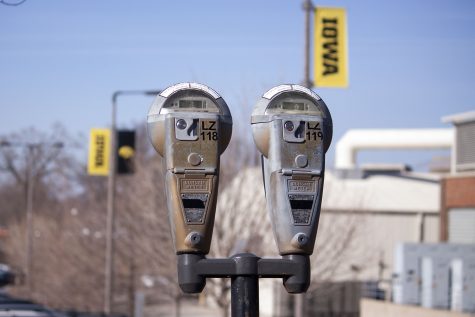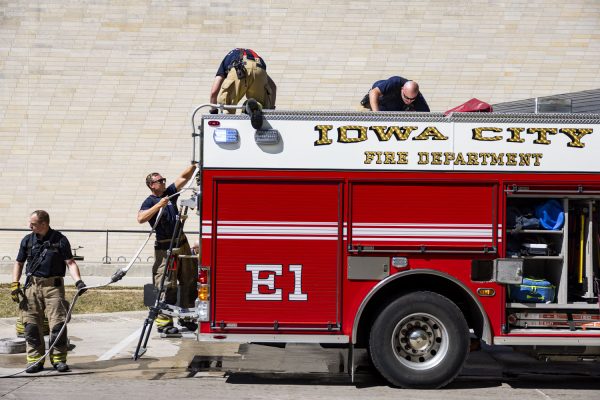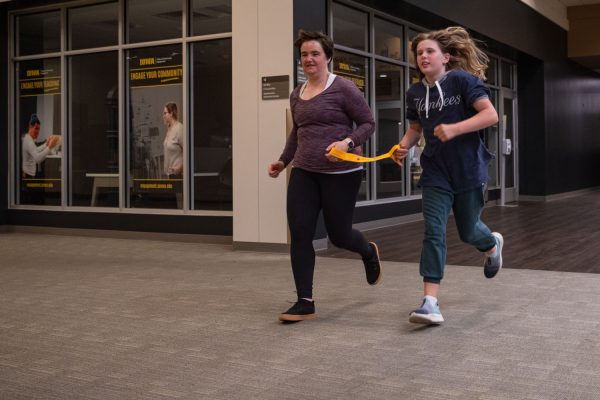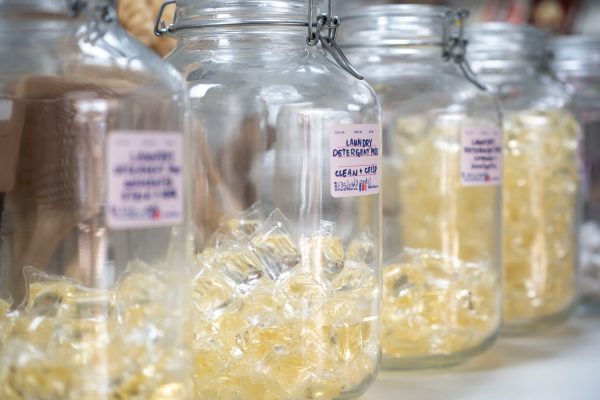Iowa City Public Works facility receives Efficiency in Energy Efficiency Design award
The city’s newly constructed Public Works facility recently received the Efficiency in Energy Efficiency Design Award for effective and sustainable components of the facility that have allowed the department to reduce its emissions.
The Iowa City Public Works Building is seen on Oct. 19, 2020. The building was recently given the Excellence in Efficiency award from the MidAmerican Energy Company.
October 19, 2020
The newly constructed City of Iowa City’s Public Works facility, which employees moved into in December 2019, recently received the Excellence in Energy Efficiency Design award from Alliant and MidAmerican Energy companies.
City Facility Manager Kumi Morris said the building sits at 85,257 square feet, making it 52 percent more efficient compared to other buildings in the same typology currently under construction, such as factory structures.
Morris said the main goal for this facility was to consolidate all of the Public Works vehicles and equipment into one building with structural integrity, energy efficiency, and the desired environmental aspects.
Morris said several aspects contributed to the design of the building to help reduce its energy emissions, specifically implementing daylighting practices. The building has many extruded windows and translucent panels, and 40 skylights to allow as much natural light into the building as possible.
“There’s a daylighting system within the facility that is modified and changes during the day as there’s more or less light,” Morris said.
Morris said the building is also constructed out of precast concrete, which is highly insulated, durable, efficient, and easy to keep clean. The roof of the building and the translucent panels are also heavily insulated, and the building has an efficient HVAC system, she said.
“The choices that were made during design and during our building process was to look at something that we were going to be proud of for a very long time,” Morris said.
City Public Works Director Ron Knoche said the team largely focused on increasing the potential energy efficiency of the structure during the design process.
“As we were going through the design process… the energy efficiency standpoint of the building and the league concept that’s out there from a design standpoint was important to us,” he said.
When choosing the materials used in the construction of the facility, Morris said, there were several aspects the design and construction team took into consideration.
RELATED: Iowa City Area Development group announces winners of new resiliency award
“[Energy efficiency] is one of the things we look at when designing a building for the city,” Morris said. “Besides looking at the energy aspects of the structure, and the long-term lifestyle costs of the building, we also look at very carefully what it’s constructed out of, how easily it is to maintain, more importantly where do these materials come from, and how far do they travel.”
Knoche said accessibility, innovative architecture, and the building’s energy-efficient design are what he’s proudest of.
“The exciting piece of this building is not just the functionality of it,” he said. “Clearly, this is a building that is new to the City of Iowa City.”
Morris said the facility was reviewed alongside other energy-efficient structures within the state of Iowa, competing alongside schools, office buildings, and other industrial structures.
Morris said the facility ranked fourth out of the 20 buildings in Iowa, which allowed it to receive $60,868 of rebate incentives, $23,000 of which were due to the efficient daylighting and LED light systems.
Iowa City Climate Action Engagement Specialist Sarah Gardner said the energy efficiency of the Public Works facility coincides with the city’s goals to greatly reduce their emissions produced within Iowa City, specifically by city-owned buildings.
“Iowa City is committed to drawing down their emissions to become a net zero community by 2050,” Gardner said. “An important part of that is looking at the facilities that are actually owned by the city for our operations and making sure we’re doing our part to reduce emissions coming from those buildings.”
Gardner said the city frequently uses a software called Energy Manager, which tracks the energy usage in all city-owned buildings. This software helps the city target which buildings are producing the most energy and need to be focused on when discussing renovation plans to introduce energy efficient materials to buildings around Iowa City.
Gardner said through the city’s greenhouse-gas emissions inventory, the city learned that five percent of the emissions profile for Iowa City comes from city-owned buildings, while 95 percent come from privately owned buildings, both residential and commercial.
“Projects like this are really important,” Gardner said. “They’re a way of the city living out its commitment to draw down emissions, and also demonstrating the kinds of steps that we all could take. To get to our emissions goals, these kinds of projects need to inspire that kind of action for privately owned buildings as well.”
Gardner said the Public Works facility receiving the Excellence in Energy Efficiency Design Award emphasizes the steps the city is taking to improve its energy efficiency and sustainability goals.
“It’s really exciting,” Gardner said. “It tells us that it’s a step in the right direction, and it really recognizes work of many years to bring that process to fruition.”



